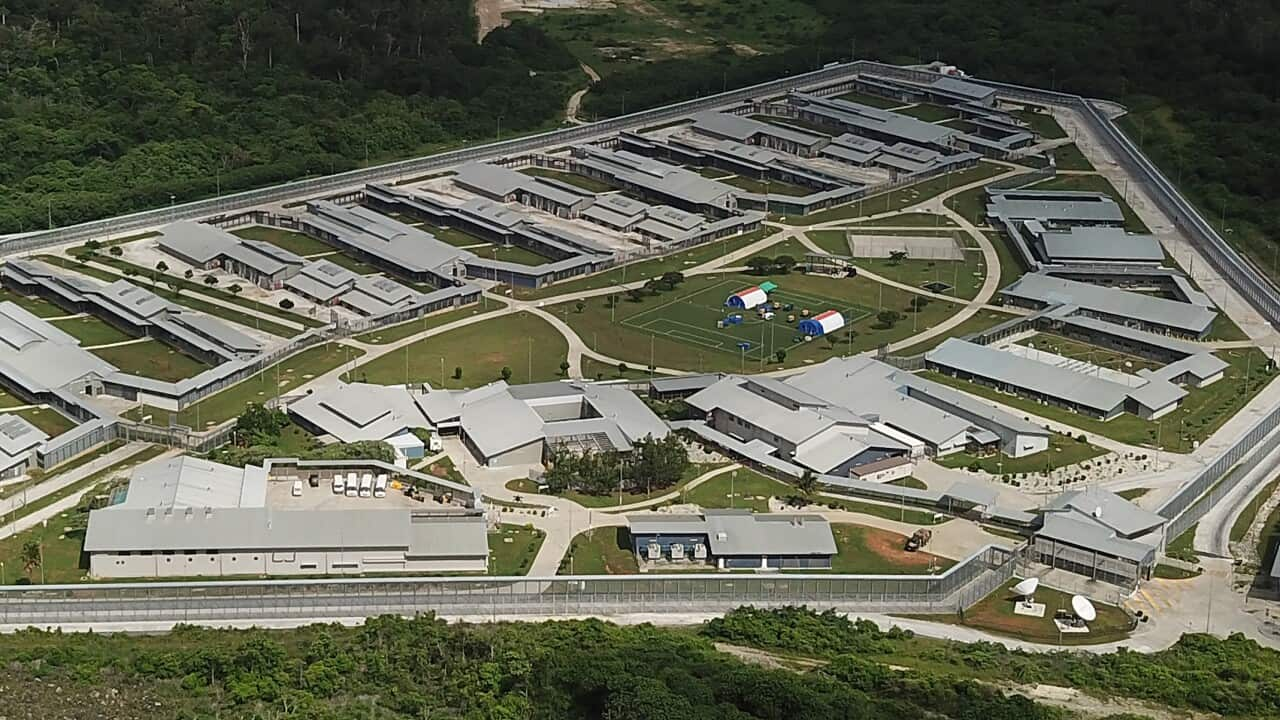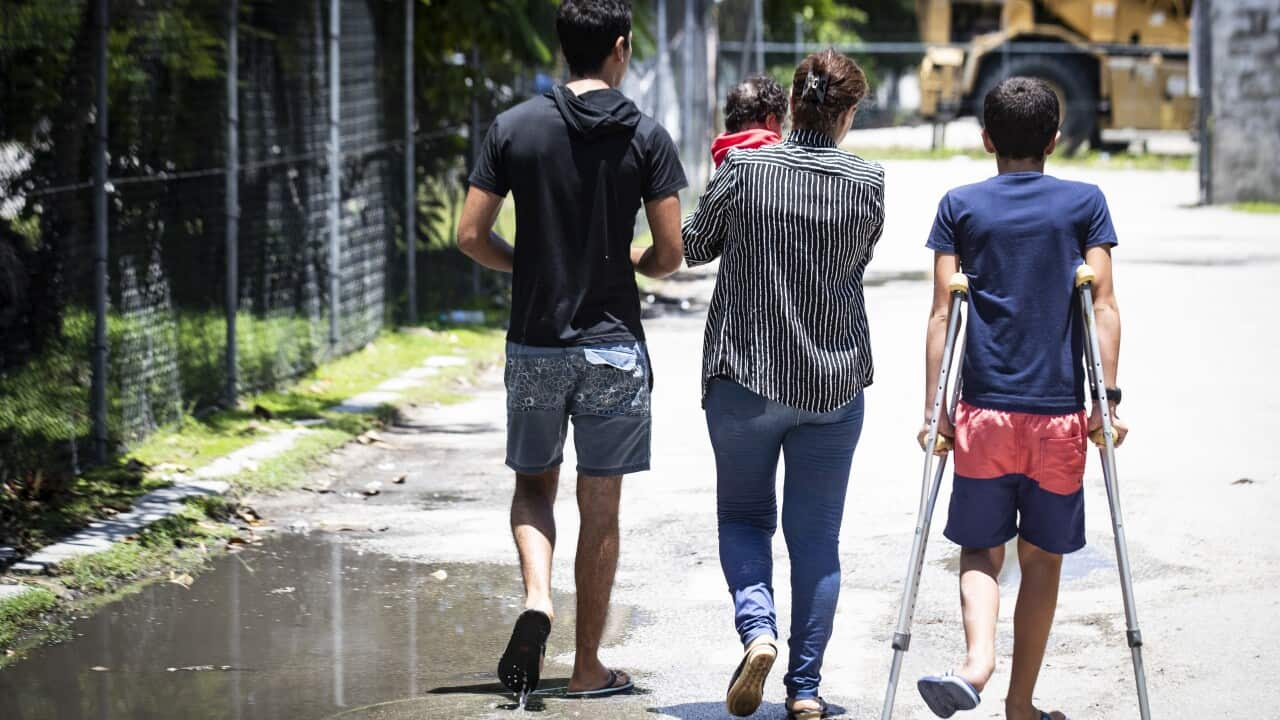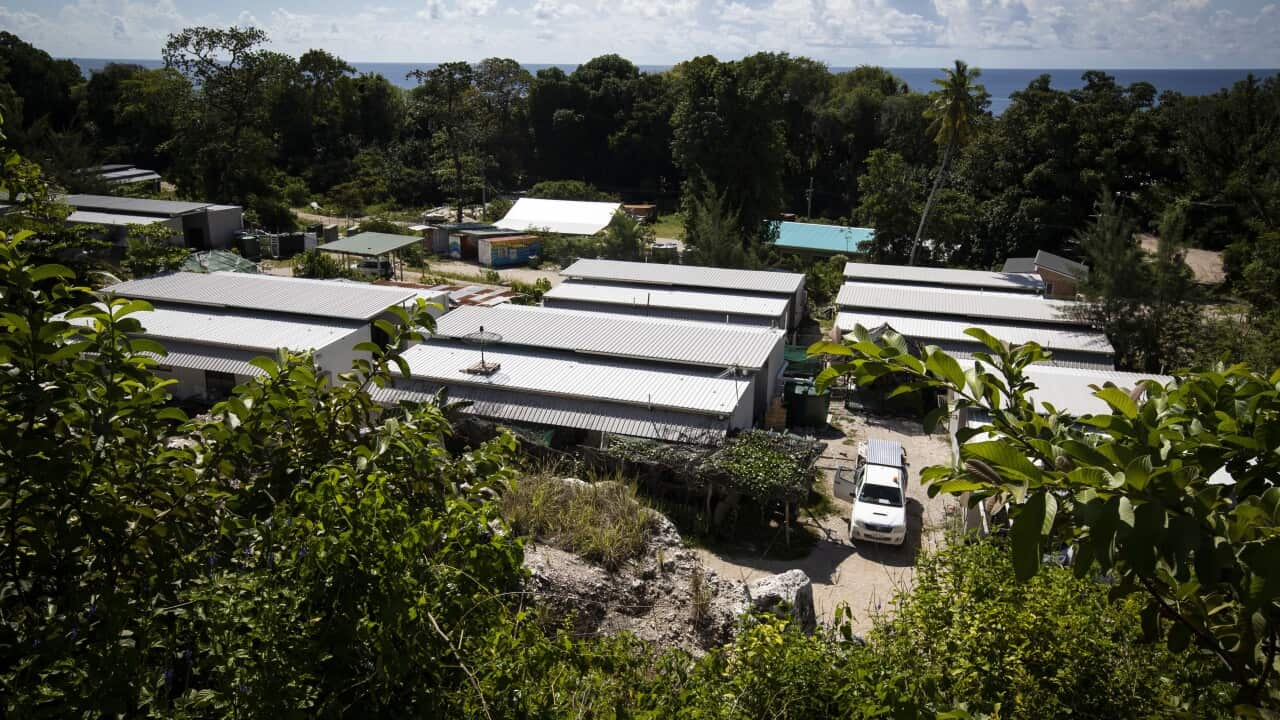Key Points
- The Christmas Island detention centre was built in the early 2000s.
- The then Government was determined to continue its policy of offshore processing and boat turn-backs.
- The centre was closed in 2018, but then reopened in a year later.
A decision to build an offshore detention centre on Christmas Island was fast-tracked despite the "enormous cost" and human rights concerns, according to newly released cabinet documents.
The papers, released to the public on Sunday, reveal the Coalition's commitment to keeping so-called illegal asylum seekers from the Australian mainland, central to its policy of mandatory detention.
On 11 March 2002, the cabinet agreed to build a detention centre on the excised Australian territory of Christmas Island – fast-tracking construction from two years to 39 weeks.
Cabinet ministers were advised of multiple risks associated with the 10-month construction time frame, including the "enormous cost of capital works".
It also noted the potential for criticism "from government and non-government organisations that the design does not meet OHS, environmental, human rights standards".
Despite this, the then-Coalition government - led by prime minister John Howard - was determined to proceed.
Why did the Howard government want immigration detention on Christmas Island?
John Howard's government feared more boat arrivals were imminent after the Tampa refugee crisis of 2001.
Cabinet papers reveal the government’s so-called Pacific Solution – a policy of boat turn-backs and processing intercepted asylum seekers in Nauru and Papua New Guinea (PNG) – had so far been deemed “broadly successful”.
In a submission from April, then-immigration minister Philip Ruddock noted that while arrangements with Nauru and PNG were “holding”, they were “vulnerable to political variables” like the upcoming elections in PNG.
The preferred candidate – Michael Somare – was staunchly against accepting asylum seekers under the Pacific Solution.
If you give the public service a job, they'll try to do it belt and braces
University of New South Wales historian, David Lee, said the Australian government’s sense of urgency also reflected the political landscape domestically.
“With the Pacific Solution, the [Howard] government had locked onto a strategy that was politically successful for it, it won an election on it,” he said.
“So even though it was more expensive to process asylum seekers in this way, and even though it complicated relationships with countries, like PNG, the government was determined to go ahead.”
How 9/11 left a mark on Australia's immigration policy
In an exclusive interview with SBS News, former Liberal cabinet minister Amanda Vanstone said anxiety around national security after the September 11 terrorist attacks in the United States was central to the government’s immigration policies.
"You'd have to be from another planet, not to say to yourself, 'gee, if I were a terrorist, and I wanted to get a terrorist to Australia, well, I'd pile them up on a boat full of genuine asylum seekers,'" she said.
Indeed, in a progress report from September 2002, Mr Ruddock wrote he was “opposed to allowing free movement on the island”.
“It would result in easy access between unauthorised arrivals, the media, and advocacy groups,” he wrote.
“I remain firmly of the view that unauthorised arrivals must be detained with a level of security commensurate with the mainland.
“Anything less could result in Christmas Island being seen as a magnet rather than a deterrent.”

In 2019, Scott Morrison announced refugees eligible for medical evacuation will be processed at the North West Point detention centre on Christmas Island. Source: AAP / Lukas Coch
Asked if she thought the centre was too punitive in retrospect, Ms Vanstone answered: “No, not particularly.”
“If you give the public service a job, they'll try to do it belt and braces, and maybe put more security in place than what is needed,” she said.
“You have a job to do, and you do it.”

The Murugappan family, also known as the Nadesalingam family, were among those held on Christmas Island. Credit: hometobilo.com
How costs for offshore detention blew out
In the September 2002 progress report, it was clear the project would not be delivered on time or within budget, with its estimated cost almost doubling – to $427 million – with a new delivery period of 120 weeks.
The Treasury expressed concern about the “significant increase” while the Department of Finance withdrew its support for the proposal and called for the project to be suspended pending a short review.
By 2003, a decline in boat arrivals, and increased processing centre capacity in PNG and Nauru meant the project’s urgency waned, and the deadline was extended by at least three years.
By 2008, when the centre was finally opened, the total cost of the project had grown to $396 million, for a facility with a decreased capacity of 800 places.
A parliamentary public works committee found the key factors cited for the cost blowout, such as the isolated location and high transport costs, “should have been foreseen”.
Ms Vanstone indicated that conversations were held within cabinet about whether “this could be done in a less expensive and less lockdown" way.
“If you read those papers, it’s hard to imagine someone wouldn’t have asked that. And the debate that would follow would be the degree of comfort people living on Christmas Island needed," she said.
What has changed about immigration in Australia?
The federal government continues to support a policy of offshore detention for unauthorised arrivals.
In 2018, the Christmas Island detention centre was closed, only to be reopened in 2019.
The Murugappan family of Tamil asylum seekers, whose case garnered international attention, was held on Christmas Island before mother Priya was flown back to the mainland for medical care that wasn’t available on the island.
In 2021, the Australian Human Rights Commission (AHRC) recommended that the centre be closed.
In a submission to the United Nations Committee against Torture in 2022, the commission reiterated this position.
“The remoteness of Christmas Island significantly restricts communication and visits with family, friends, lawyers, and other key supports,” it said.
“In-person visits are difficult, if not impossible, due to geographical and other barriers ... The detention centre is not an appropriate facility for immigration detention, particularly for people who are vulnerable or have been detained for prolonged periods of time.”














